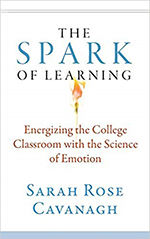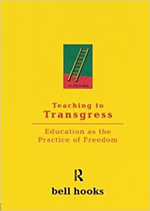Powerful First Impressions
More than seven thousand students will be starting at FSU on Monday: your class may be their first experience in a college classroom. What kind of impression do you want to make?
These new students (as well as our returning students, and our transfer students) are probably eager and trepidatious in about equal measure. Classrooms crackle with emotion; positive ones, like excitement and attachment, can enhance learning, while negative feelings, like fear and alienation, can make learning almost impossible (Hammond, 2015; Verschelden, 2017). Since emotions are contagious (Cavanagh, 2016) and since students’ first impressions tend to shape their experience of a whole semester (Ambady and Rosenthal, 1993) it’s valuable to anticipate and manage how students feel in these first encounters.
Next week is our opportunity to kindle excitement and assuage anxiety, setting high expectations for our students and for the learning that’s in store for them this fall. If ever there was an occasion to reveal your passion for the subject you teach, the first week of class is the time. When students feel your enthusiasm, they’re primed to catch your fever. Conversely, if they sense that you’re bored or harried, they can’t risk seeming any more engaged than they perceive you to be.
If the first day of class is just an administrative day, dedicated solely to policies, logistics, standards, etc., we sacrifice our best opportunity to shape how students feel about the learning they’ll be doing. They’ll be off to a better start if we can provoke wonderment, stir curiosity, and foster a sense of belonging.
Here are a few practical strategies for cultivating an environment for learning:
Introduce your students to the “big questions” your course will answer. What makes something alive? Why do some people have power when others don’t? How can you tell a story without words?
Get students interacting with each other. Students often feel isolated in their classes. First-year students in particular may experience the university only in huge classrooms, where they never speak. Chamblis and Takacs (2014) insist that a sense of social connectedness is a prerequisite for learning. Asking students to complete some tasks in groups or pairs, right from the start, will habituate them to collaborating and working actively.
Convey confidence in their ability to succeed. Especially if your course has a reputation as intimidating, you may need to alleviate students’ anxieties. You need to communicate high expectations and confidence that students can meet them. Then you can show them how you’ve designed the course to support their learning, with plenty of opportunities for practice and feedback, and you can steer them toward resources that will help them learn.
Humanize yourself. It’s often difficult for us to understand how intimidating we may seem to students. Students learn more when they trust their instructors, however (Arum and Roksa, 2011), so we should work actively to build rapport. You don’t have to get overly personal: just explaining how you fell in love with your field can be pretty endearing. It’s even more important to show that you care about your students and their learning, so welcoming them to your course, encouraging them to visit you during office hours, and inviting their questions goes a long way.
Get to know your students. If your class is small enough, you can start learning names. Even if it’s not, you can learn a lot about who’s in the room. You can poll the class, using clickers or a tool like kahoot, to learn their interests, how far away their families live, how many languages they speak, or what prerequisites they’ve taken. You might want to find out what they already know about your discipline or subject, so you can help them build on this prior knowledge throughout the semester. Your interest in them, and your willingness to see them as individuals rather than “seats,” will actually help them learn.
We hope the first day is enjoyable for you and your students, and we wish you a happy start to a productive semester.
We look forward to working with you. Welcome Back!
Upcoming…
Sign Up Now for Faculty Reading Groups:
CAT’s faculty reading groups are a great chance to connect with colleagues from across the university, delve into the research on learning, and share practical strategies for making your classes even more effective. Each group will involve a series of three meetings, so please check your calendar to make sure you can attend. Space is limited.
RSVP here, and we’ll send you your complimentary copy of the book. All meetings will be held in 432 Diffenbaugh.
We look forward to working with you!
Reading Groups
Faculty reading groups are a great chance to connect with colleagues from across the university, delve into the research on learning, and share practical strategies for making your classes even more effective. Each group will involve a series of three meetings, so please check your calendar to make sure you can attend. Space is limited. RSVP here, and we’ll send you your complimentary copy of the book. We look forward to working with you!
 How Learning Works
How Learning Works
Tuesdays, 12:00-2:00
9/10, 9/17, 9/24
This book distills the research on cognition, translating decades of scientific literature into practical advice for university faculty and introducing seven general principles of how people learn. The authors draw on research from cognitive, developmental, and social psychology, as well as educational research, anthropology, etc. The discussion spans issues from memory to motivation, integrating theory with real-classroom examples in practice. Participants will develop strategies for strengthening their own teaching through the application of these principles of cognitive psychology.
Please feel welcome to bring your lunch to this brown-bag lunch-hour session.
 The Spark of Learning: Energizing the College Classroom with the Science of Emotion
The Spark of Learning: Energizing the College Classroom with the Science of Emotion
Thursdays, 2:00–4:00
9/12, 9/19, 9/26
Most of our preparation for teaching (both our training and our planning) focuses on the content, and the thinking students need to do, but Sarah Rose Cavanagh reminds us that learning is a highly emotional process. Anxiety and fear hamper learning, while powerful positive emotions can enhance it. Cavanagh offers concrete strategies for harnessing the power of emotion to galvanize learning.
 Race Talk and the Conspiracy of Silence: Understanding and Facilitating Difficult Dialogues on Race
Race Talk and the Conspiracy of Silence: Understanding and Facilitating Difficult Dialogues on Race
Tuesdays, 2:00-4:00
9/17, 9/24, 10/1
Faculty often feel unprepared for the difficult dialogues or inter-group conflicts that may arise in class, but navigating these discussions is important for students’ learning and for maintaining a productive classroom environment. Derald Wing Sue’s book unites quantitative and qualitative research, providing numerous examples and analyses of complex and challenging conversations. This reading group will use his analysis and advice to interpret dynamics in our own classrooms and prepare to handle them more effectively. Facilitated by Jonathan Jackson, from FSU’s College of Business.
 Teaching To Transgress
Teaching To Transgress
Tuesdays, 2:00-4:00
10/8, 10/15, 10/22
Hooks challenges the “banking” model of learning, where education is envisioned as an accumulation of received wisdom. She argues that instead, education must be a process of empowerment and liberation, in which students learn to question, to resist, and to find their own place in a larger conversation. She asks us as educators to examine our own assumptions, biases, and privileges, so that we can better reach our students, and offer them a truly transformational education. Participants will develop strategies for putting these ideas into practice.



